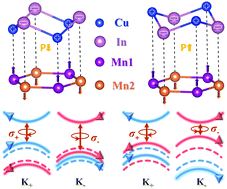Electrical control of the valley degree of freedom in 2D ferroelectric/antiferromagnetic heterostructures
Abstract
Valley, the energy extrema in the electronic band structure, is regarded as a new degree of freedom of electrons, in addition to charge and spin. Valleytronics focuses on the valley degree of freedom and has attracted considerable attention due to its potential applications in information storage. In this study, to use the binary valley polarization in a controllable and nonvolatile manner is still the core issue. We propose that the 2D CuInP2S6/MnPS3 system could be used to electrically tune the valley polarization. In these ferroelectric/antiferromagnetic heterostructures, the ferroelectric CuInP2S6 layer, which is originally in the paravalley state, turns into the ferrovalley state due to the magnetic proximity effect of the antiferromagnetic MnPS3 substrate. Interestingly, when the ferroelectric state of the CuInP2S6 layer is changed, the valley polarization of the system is significantly reversed, providing the possibilities to manipulate the valley degree of freedom via electrical means. On account of the above-mentioned findings, all electrical reading and writing memory devices based on such heterostructures are proposed to utilize the valley degree of freedom. Our findings open an appealing route toward the design of functional 2D materials for valleytronics.



 Please wait while we load your content...
Please wait while we load your content...